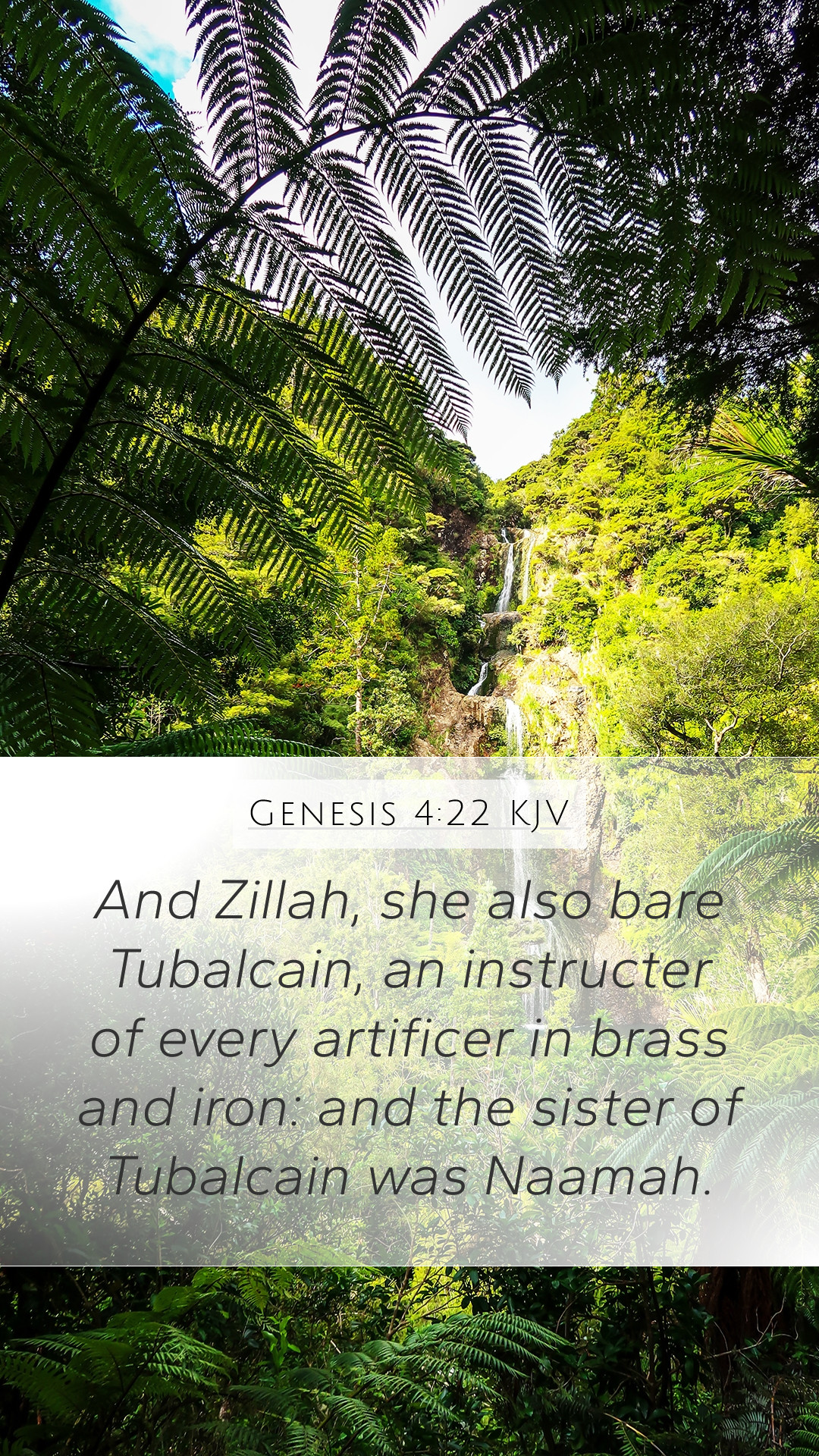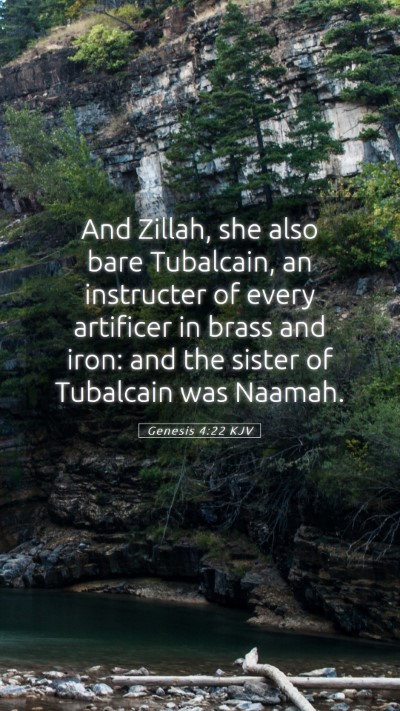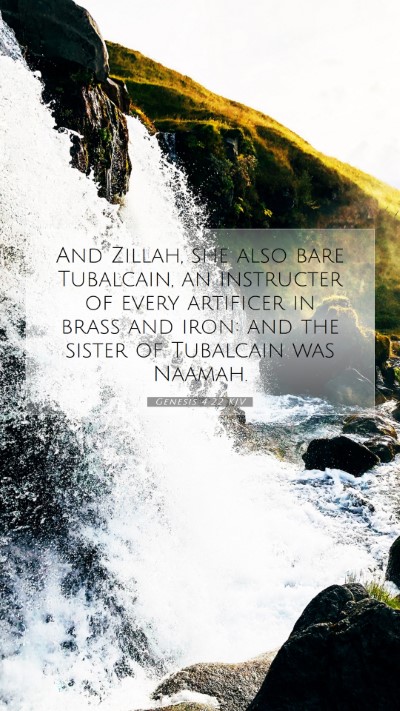Bible Verse Meaning: Genesis 4:22
Genesis 4:22 states, "And Zillah, she also bore Tubal-cain, an instructor of every craftsman in bronze and iron. And the sister of Tubal-cain was Naamah." This verse introduces Tubal-cain, a character who represents the advancement of human skills and technology, particularly in metallurgy.
Summary of Genesis 4:22
This passage touches on several themes, showcasing the evolution of human civilization and its associated skills. Tubal-cain is recognized as a pioneer in the crafting of metal tools, which implies a significant shift in how societies interacted with their environment. This commentary draws from various public domain sources like Matthew Henry, Albert Barnes, and Adam Clarke.
Insights from Commentaries
-
Matthew Henry:
Henry emphasizes the importance of craftsmanship and how the skills learned from figures like Tubal-cain contributed to societal progression. He reflects on the dual nature of human innovation—capable of both creation and destruction.
-
Albert Barnes:
Barnes elaborates on the cultural significance of Tubal-cain. He suggests that his name, meaning "he brings," indicates an innovator who provided significant tools for the betterment of humanity. This reflects the capabilities of human ingenuity to reach new heights.
-
Adam Clarke:
Clarke points out the historical context in which these verses were written, noting that the crafting of metals was fundamental in biblical times. He draws connections between Tubal-cain’s legacy and later developments in technology, illustrating that innovation has deep roots in biblical history.
Understanding the Context
The mention of Tubal-cain and his sister Naamah presents a narrative that highlights familial relationships amidst the rise of technological progress. It serves the larger narrative of Genesis that tracks human development and moral implications. In examining this verse, one must consider the social and technological evolution during this phase of early history.
Key Themes and Questions
- Humans and Innovation: How does the Bible portray human creativity and inventions?
- Moral Implications: What ethical challenges arise from advancements in technology as seen in the biblical narrative?
- Legacy of Work: In what ways do personal contributions shape subsequent generations based on this verse?
Cross References
- Genesis 4:19: Discusses Lamech's polygamy and provides context to Tubal-cain's family.
- Genesis 4:20-21: Introduces Jabal and Jubal—other figures associated with the development of society.
- Genesis 11:3-4: Reflects humanity’s advancement and innovation through the construction of the Tower of Babel.
Practical Applications
Understanding Genesis 4:22 invites readers to reflect on how innovation impacts their daily lives. It asks us to consider:
- Utilization of Skills: How can we use our skills for the betterment of society?
- Moral Responsibility: What are our responsibilities as we advance technologically?
- Legacy: What legacy are we leaving for future generations related to our creations?
Conclusion
Genesis 4:22 serves as a reminder of the human capacity for ingenuity and creativity, and how such skills have the potential to shape our world. Recognizing the biblical origins of various trades and crafts can deepen our appreciation for the balance of creativity and moral direction.
Keywords for Further Study
For those seeking to dive deeper into the context of Genesis 4:22, consider exploring:
- Understanding Scripture in the context of technological advancement.
- Bible verse interpretations that reflect on human ingenuity.
- In-depth analysis of the moral implications of progress.


